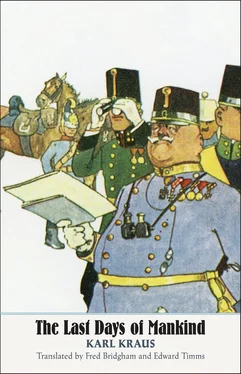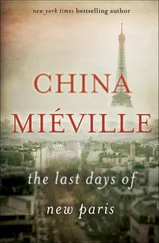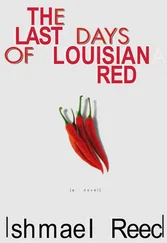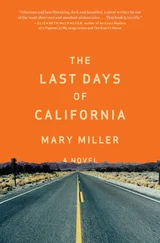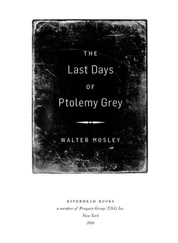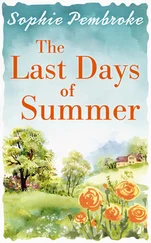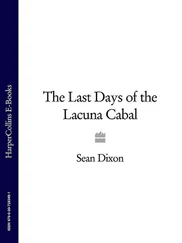BUQUOY, probably Count Karl (1885–1952) and Count Heinrich (1892–1959), both in Uhlan regiments, decorated for bravery: 272f.
BÜRGERTHEATER, in Vordere Zollamtstrasse (Plan E3), playhouse and operetta theatre: 492.
BURGTHEATER →Hofburgtheater.
BURIÁN, Count Stefan Burián von Rajecz (1851–1922), succeeded →Count Leopold Berchtold as foreign minister (1915–16), finance minister (1916–18): 431, 433f, 458, 462.
BUTTMANN, Philipp Karl (1764–1829), German classical philologist: 356.
CADORNA, Count Luigi (1850–1928), chief of staff of Italian army (July 1914–November 1917), in command throughout →Isonzo campaigns, dismissed after → Caporetto: 336ff.
“CALL ME CUDDLE BUNNY!” (“Sag Schnucki zu mir!”), duet from operetta Die Rose von Stambul (1916), music by Leo Fall (1873–1925), libretto by Julius Brammer (1877–1943) and Alfred Grünwald (1884–1951): 481, 525.
CAPORETTO (Map D4), Battle of, scene in autumn 1917 of disastrous defeat inflicted on Italian army under →Cadorna by combined German and Austrian forces: xviii, 461.
CAPUCHIN CRYPT, and Habsburg tomb, in Kapuziner Kirche (Plan C4): 37, 377, 486f, 515.
CARNEGIE, Andrew (1835–1919), American industrialist and philanthropist: 191.
CARPATHIANS (Map F3/G3), 1,300-kilometre mountain range in south-east Europe; attempted Russian breakthrough to Hungary partially successful (late 1914–early 1915), but conquest of Galicia thwarted by February 1915 (→Uzsock Pass): 85f, 89f, 246, 406ff, 414, 542, 545.
CASEMENT, Sir Roger (1864–1916), Irish patriot, executed by the British for attempting, with German support, to enlist Irish prisoners of war in fight against Britain: 384.
CASSIAN, supposedly refused to record trial of suspected Christian centurion, Marcellus, in AD 298; both became Christian saints and martyrs. →Hans Müller wrote newspaper features as “Cassian at the Front”: 254.
CATTARO/Kotor (Map F5), Austrian navy base in Montenegro until 1918: 357.
CENTRAL POWERS (Zentralmächte), designation for the German Reich, Austria-Hungary, and other nations opposed to the →Entente.
CHABATZ (Schabatz, Šabac, Map F4), disputed Serbian frontier town on →River Save, scene of fierce fighting (August 1914–autumn 1915): 49, 388, 536.
CHAPEAU (Chapeau Rouge) (Plan C4), nightclub in Annagasse: 82, 319.
CHARAS, Heinrich (1860–1940), head of Viennese Voluntary First Aid Service: 43, 506.
CHERUSCAN SOCIETY, Cheruscia was a nationalist German duelling fraternity which became notorious in 1910 for serious injuries (III, 11): 258ff.
CHINESE WAR POET, Chong-fu-tse (c. 551–479 BC), author of “Epitaph for a Warrior”, trans. Klabund (1915): 494.
CHOTEK, Sophie (1868–1914), Bohemian countess, later Duchess of Hohenberg, →Franz Ferdinand’s morganatic wife: 31, 33, 34, 37, 41, 45, 122.
CLEMENCEAU, Georges Benjamin (1841–1929), French prime minister (1906–9, 1917–20): 358, 365, 367.
CLEOPATRA’S NOSE, satirical leitmotif deriving from a pretentious editorial in the Neue Freie Presse of 16 April 1915 containing absurd speculations about the causes of the war.
CONRAD →Hötzendorf.
CONSTANTINE, Roman emperor whose conversion to Christianity after the Battle of the Milvian Bridge (AD 312) is associated with a vision of the Cross and the words “in hoc signo vinces” (In this sign you shall conquer): 386.
CSARDASFÜRSTIN ( The Gipsy Princess , 1915), operetta, with music by Emmerich Kálmán (1882–1953), libretto by Leo Stein (1861–1921) and Bela Jenbach (1871–1943): 59, 170.
CZERNIN, Count Ottokar von und zu Chudenitz (1872–1932), foreign minister (1916–18) who represented Austria at the Treaty of →Brest-Litovsk, criticized by Kraus for vacilliating between conquest and conciliation: 343, 366, 368.
CZERNOWITZ (Cherniowce, Map G3), capital of Habsburg crown land →Bukovina, occupied by Russian troops (August 1914), retaken by Austrians (October 1914), positional warfare until 1916, taken by Russians during →Brusilov offensive (June 1916), retaken by Central Powers (August 1917): 103, 219, 311, 314, 316.
DALMATIA (Map E4/E5), Austrian crown land: 548.
DANGL, Johann (1870–1944), hotelier and mayor of →Semmering: 182.
DANKL VON KRASNIK, Count Viktor (1854–1941), commander in chief of First Austro-Hungarian Army (1914), regional commander in Tyrol (1915, Map D4): 101ff.
DANZER’S ARMY JOURNAL , military journal (1899ff): 80.
DAVID, Eduard (1863–1930), Social Democrat, German Reichstag deputy (1903–18), first president of Weimar National Assembly (1919): 437.
“DEAR FATHERLAND, SLEEP EASY NOW” (Lieb Vaterland, magst ruhig sein), refrain from →“Watch on the Rhine”: 191.
DEBRECEN (Map F3), main Hungarian livestock market: 341.
DEFENSIVE WAR (Verteidigungskrieg), leitmotif for German and Austrian insistence that, “encircled” by enemies, they are fighting a “holy defensive war”: 92, 145, 190, 220, 266, 284, 302, 308, 332, 359, 429, 455, 518.
DEFREGGER, Franz von (1835–1921), popular Tyrolean genre painter: 139.
DEHMEL, Richard (1863–1920), popular poet, initially gripped by war fever; Kraus quotes from his Kriegs-Brevier (War Anthology, 1917): xix, 184, 286f.
DELBRÜCK, Max (1850–1919), German agricultural chemist: 258.
DEMEL, famous café and confectioner on →Kohlmarkt (Plan B3/C3): 63, 120.
DEUTSCHES VOLKSBLATT , nationalistic, anti-Semitic daily: 243.
“DEUTSCHLAND, DEUTSCHLAND ÜBER ALLES” (“Deutschlandlied”), music by Joseph Haydn (1732–1809) and text by August Heinrich Hoffmann von Fallersleben (1798–1874), patriotic song that became German national anthem from 1922: 296, 349, 504.
DEUTSCHMEISTER (Hoch- und Deutschmeister), celebrated Viennese “house regiment” of the Habsburgs, with barracks in the Rudolf (Rossauer) Kaserne (Plan B1/C1): 106f, 312, 316, 531.
DOBERDO, plateau above Gulf of Trieste (Map D4), scene of fierce battles between Austro-Hungarian and Italian troops in March 1916 (fifth battle of →Isonzo, when it fell to Italian troops) and August 1916 (sixth battle of Isonzo, when Italians captured →Gorizia). The Grumbler’s reference (III, 41) to “a hundred thousand men” having perished overstates actual losses, but casualties on the Italian front were indeed exceptionally high. Total Austro-Hungarian military deaths during the First World War are estimated at 1.5 million (almost double the figure for Britain): 307, 458.
DOBNER v. DOBENAU, Friedrich (1852–1925), last Lord High Steward to the Habsburgs. 42f, 506, 508.
DOBRUDJA, →Tutrakan, 270.
DOHNA-SCHLODIEN, Count Nikolaus (1879–1965), commander of German cruiser Möwe , which broke through British North Sea blockade in 1916 and attacked merchant shipping in the Atlantic: 416f, 547.
DÖRMANN, Felix (Felix Biedermann, 1870–1928), author, especially of poetry, film scenarios, and operetta librettos (→ Walzertraum ), also responsible for “Those Serbs and Russian shits,/We’ll hack them all to bits!” (I, 1): 185, 254.
“DRAUSSEN IM SCHÖNBRUNNER PARK” (Out there in Schönbrunn Park), song eulogizing the “dear old gentleman” →Franz Joseph from the Singspiel Anno 14 (1914), music by Ralph Benatzky (1887–1967) and text by Fritz Grünbaum (1880–1941): 219, 313, 376.
DRINA, river marking much of the frontier between Austria-Hungary (Bosnia-Herzegovina) and western →Serbia (Map F4/F5), scene of fierce fighting: 68, 110, 543.
DUB, Flora, prominent Viennese socialite who featured regularly in → Neue Freie Presse : 45, 180, 234ff, 507.
DUNCAN, Adam (1731–1804), British naval commander who defeated Dutch at Battle of Camperdown (1797): 350.
Читать дальше
